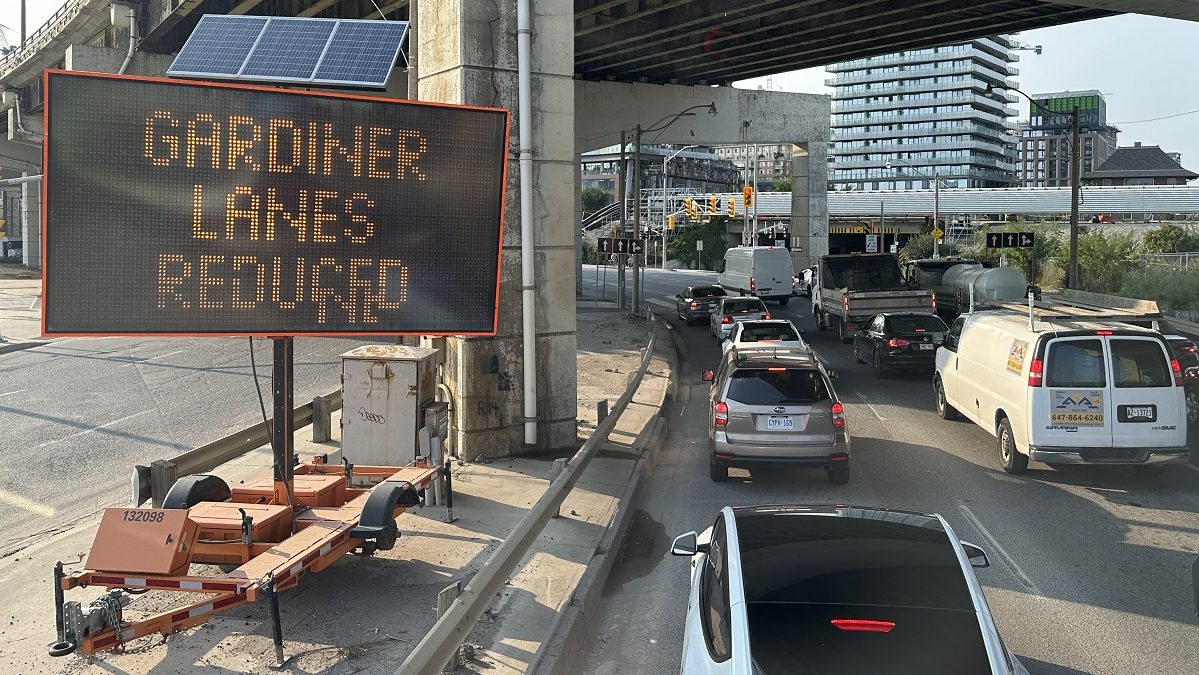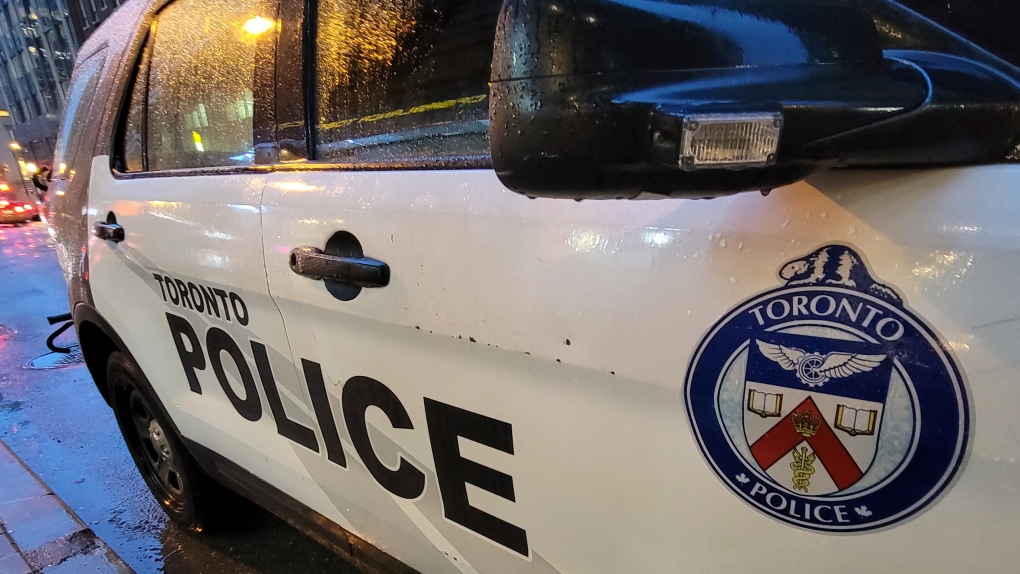Infra
Cameras, AI and road occupancy fees part of proposed Toronto congestion management plan update

As parts of Toronto deal with increasing commute times and continue to be choked with traffic gridlock, municipal officials say proposed updates to the City’s congestion management plan will help vehicles move in a better way.
“We’re looking at moving more people through corridors across the board … we need to ensure that we have safe and reliable alternatives for people that make sense,” Roger Browne, the director of traffic management for the City of Toronto, told reporters Friday morning.
“When it comes to congestion management, I mean this is not about making cars disappear. This is about better, more effectively managing congestion.”
City staff held a brief for reporters on Friday to coincide with the release of a report going before councillors on Sept. 27. It outlines several proposed actions and requests for new enforcement capabilities.
One of the more notable requests deals with imposing a congestion management recovery levy on entities looking to block road lanes for construction.
While development work and housing construction currently equates to around five per cent of all road closures across Toronto, officials noted some of the blockages can last for years. Those right-of-way encroachments are often in place for construction safety reasons.
“Do it faster,” Toronto Mayor Olivia Chow said in a message to companies.
“There is no excuse for closing roads in a way that is unnecessary.”
Municipal officials want to see daily fees in place that could potentially increase based on different variables (i.e. put in place on a well-used arterial road versus a side road, time of day etc.). The money collected would go into the City’s general revenues, but as part of the budget process staff are proposing to direct the funds to hire more traffic agents and pay for other traffic mitigation measures.
“What we’re trying to do right now Is sort of a pull-all-levers approach to get them to use it as infrequently and short duration as possible,” Barbara Gray, the City’s general manager of transportation services, said when asked if there’s a concern the costs could be passed on to future property occupants.
“We certainly don’t want people to work without the highest safety requirements managed. We just want people to use that right-of-way space and value it for what it is because when it is blocked, it’s having an impact on the travelling public and we want to make sure that we’re able to manage it more effectively than we think we are doing today.”
But when it comes to potentially charging drivers a congestion management fee to drive into the downtown similar to other jurisdictions like London, England, City of Toronto staff ruled that out. Browne said it presented an equity issue for those who needed to come into the city by car and weren’t able to use alternatives, adding there was concern about costs being passed on.
“Anyone that has to do business, anyone that has to bring goods or services into the city, they’d still have to do that (and) they would just pass that charge onto the consumer,” he said.
To complement the work the City traffic agent program is doing, which staff are looking to expand, officials also said they want to formally request the Ontario government to allow for more automated camera enforcement for offences like intersection blocking (referred to as “blocking the box”) and stopping in prohibited areas. The report called for cameras at fixed locations or mounting the cameras on TTC vehicles.
“We’re public servants, we do not violate people’s privacy, but if you break the law we need to catch you. If you repeatedly break the law because you keep driving irresponsibly … that’s safety, right, so if you think about it we’re just enforcing the law,” Toronto Mayor Olivia Chow said when asked about potential privacy concerns with such a program.
The report also called for rush hour stopping violations to be increased to $300 from $190.
While many of the measures involve residents and private entities, it’s public entities that are contributing majorly to road closures across Toronto. Staff said 47 per cent of the closures are because of “City-led” construction (e.g. road, sidewalk and sewer reconstruction work) and 10 per cent is due to transit expansion and TTC easier access program construction. They also said 38 per cent of closures are due to utilities work (e.g. hydro, telecommunications etc.).
To better coordinate the work, officials said they needed to create a “strategic capital coordination office” to make sure municipal and private-sector projects are in better sync, and engage entities earlier in the process to plan simultaneous projects.
Another move would see increased hours of work into the night along with increased staff for municipal projects, such as the reconstruction of the east side of University Avenue, Queen’s Park Crescent and Harbour Street. There is discussion about extending this to other projects in 2025.
With a large number of bottlenecks happening, officials were asked about potentially adjusting infrastructure work since a large percentage of the road closures are within the municipality’s control.
“We’ve all seen what happens when we don’t do sewer projects and water main projects in a timely fashion, we get collapses and when those happen then we have to manage that as an emergency work,” Gray said, adding they ultimately have more control with planning happening in advance.
Meanwhile, other proposed measures included building out a “digital twin” of Toronto and using artificial intelligence officials would rely on modelling to help inform detours due to road closures, signal timings etc. City staff will also be unveiling a public, online congestion management dashboard in October so residents can better keep track on efforts to reduce gridlock.
“Obviously recognizing the frustrations a lot of people have with respect to congestion on the street, the one piece of advice I’m always giving is to plan your trips accordingly,” Browne said.
“On our part, we’re doing everything we can to provide better information, more detailed information to effectively help Torontonians make those decisions more effectively.”
The report still requires committee and council approval before the proposed actions and directions can be carried out.









